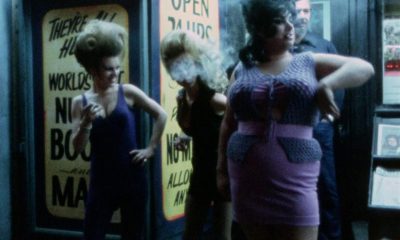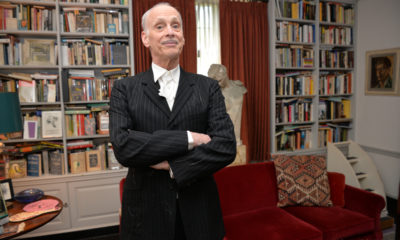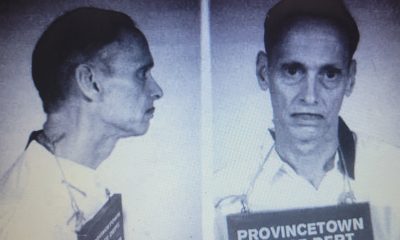a&e features
Actress tells all in ‘Mommie’ memoir
Carol Ann on the shoot from hell and what she’d say to Faye Dunaway today
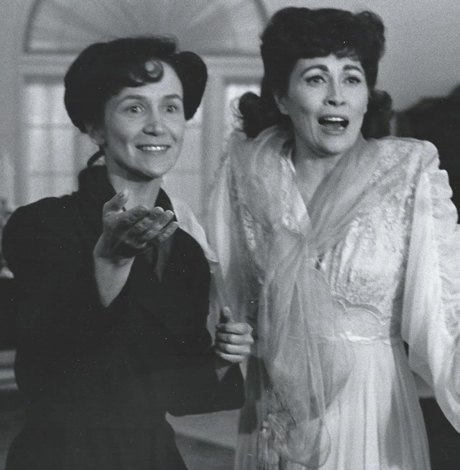
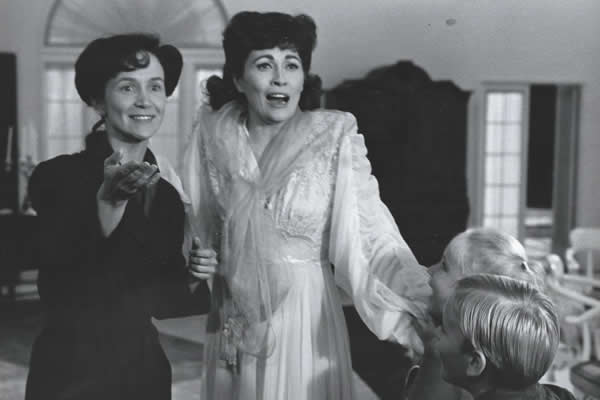
Rutanya Alda, left, with Faye Dunaway, Mara Hobel and Jeremy Scott Reinholt in ‘Mommie Dearest.’ (Photo courtesy Alda)
Editor’s note: this is part two of two of our interview with actress Rutanya Alda, author of”The Mommie Dearest Diary: Carol Ann Tells All.” Part one is here.
WASHINGTON BLADE: Although you don’t hold back at all in your book concerning working with Faye Dunaway, your “Mommie Dearest” co-star, it didn’t feel to me that you had an axe to grind. You write of several moments too where she was gracious — signing photos, posing for photos on set with your brother, when you give her the sweater you made and so on. On the other hand, the book “Mommie Dearest” always felt to me like Christina had a huge axe to grind. Do you agree?
RUTANYA ALDA: I tried to be fair in my book and I hope when Faye reads it she can respect the fact that I was fair to her. … It’s very hard to be with a person on the set who is totally ungiving to the other actor. I just held my tongue then because, as you know from the book, she never stayed for any of my close-ups. I stayed for hers to the 12th, the 13th hour and she never turned around and stayed for any of mine. It’s really not honoring the other actor and we have to honor that. We’re a team working together for the best of the scene. I always felt Faye worked for herself only and that’s the truth. There were private moments when I felt really bad for her … but those moments really didn’t last that long. It’s too bad because, you know honestly, if she had just been gracious (to the crew), they would have embraced her but instead she alienated so many people. When my brother was there as a guest and talked to her, I just got her at a good moment. If it had been a volatile moment, I wouldn’t have dared ask her. The timing just happened to have been right and she was as mellow as she could get. But we were always on pins and needles and you just knew you didn’t want to ask certain things at certain times.
BLADE: Hollywood lore is so full of stories of bitchy star behavior. In your experience, is there always fire where there’s smoke or does some of this get unfairly exaggerated in the public’s endless appetite for such tales?
ALDA: It’s gotten to be so much about me, me, me that some people think the whole world rotates around them and that’s really the worst position for an actor to put themselves in. As Bette Davis said, you’ll meet the same people on your way down as your way up. Fame is fleeting. It lasts for a while. If you have a few years’ run or a decade run, you’re lucky and I think if you can be compassionate and kind, I think that’s a great lesson to give people. I just went to a luncheon at 21 and the coat check girl, so many fairly well known people just throw their coat down and go upstairs and you know, it only takes a second or two to say, “Thank you,” and smile. She remembered me from the time before … just because I treated her like a human being. A lot of stars have come up very quickly and without the experience of being in the industry very long and I think they don’t appreciate the audience as much as they should. A smile or a hello is all you need to give sometimes. Without the audience, you have nothing. …
And the audience of “Mommie Dearest” is a great audience and I think they are disappointed that Faye has never embraced the film. If I were Faye Dunaway, I would have said, “Look, I was great in the part, I did great things. OK, maybe I had an over-the-top performance, but it worked, didn’t it?” But all these years of not talking about it and suddenly after 30 years she’s writing a book? Why? What’s in it for her? Is she doing it for the money? She’s really deprived herself of a great audience of people who love the movie and it’s a detriment to her. Look at all the joy she missed.
BLADE: So you know she is proceeding with her own book?
ALDA: Yes, she has a contract with a publishing house. A friend I know, whom I won’t name unless he names himself, he was just offered to be her ghostwriter. I think she’s gone through several. I e-mailed him and said, “Are you going to do it?” He said, “No, not even if she gives me a million dollars cash would I put myself through this.” So she’s going to find someone from whatever point of view she’s going to do it and I think it’s supposed to be out sometime next year. When she wrote to me, it said time sensitive, she in other words, she probably has a date by which she has to turn it in. Usually it’s a year and a half, then you’re supposed to deliver the book.
BLADE: On his “Mommie Dearest” commentary, John Waters said he thought the film would have worked as straight drama with just some slightly more judicious editing, for instance the scene where you see Diana’s (Scarwid as Christina) panties. Do you agree?
ALDA: (laughs) No. Don’t get me wrong, I love John Waters, I think he’s wonderful, but no, I don’t agree with that. I just ran into an editor who was working on another movie at Paramount at the time and he’d read the script, he’s gay, and he really wanted to edit the film. He loved it and saw it as a camp movie right away and said to Frank, “I want to edit it.” Frank said, “No, you’re the wrong person, we want this to be a big drama,” and I thought, “My gosh, I never knew this.” He said, “You didn’t know it was camp when you read the script?” I said, “No.” He knew right away. But you know, they edited like an hour and a half out of that movie anyway. Some of the takes were really, really long and so much was cut, especially my scenes. I don’t know if it would have changed it but I think it would have made more sense if some of it had been put back, like when my character, Carol Ann, meets Joan and is hired by Joan. I think that would have been a good addition to the story. … But I’m kind of glad the way it turned out because it’s going to continue to have this huge following for years. If it had just been a straight drama, I don’t think we’d be talking today. I think it would have just been one of these movies that was a good movie and then people would have forgotten about it. It’s given people a lot of joy through the years.
BLADE: Do you think “Mommie Dearest” ruined Faye’s career? I know that’s probably an oversimplification, but people say that and it does seem like her filmography is quite spotty after that.
ALDA: I don’t think so. She did quite a few films after it, maybe 10 or 15.
BLADE: Yes, but there was never another “Network” or “Chinatown”-caliber film after it.
ALDA: No, because what did she choose right after “Mommie Dearest”? “Supergirl”? I mean, her choice of material — she still had the power to choose her own material at that point and she was choosing stuff that wasn’t in the same league as “Network,” or, you know, “Chinatown.” I mean these are really great films, really amazing films, and she chooses “Supergirl” and other films you can’t even remember? Even the movie she likes to talk about with Marlon Brando and Johnny Depp (“Don Juan DeMarco”), well that’s not a very good movie. I mean God bless all the actors, but some movies just don’t work. Her choice of parts was really not good. Also I think when one is constantly late on a set and constantly causes production to be slowed down, sooner or later producers just don’t want to lose that money. We went a couple of million dollars over budget because of constant lateness and finally Frank Yablans pulled the plug and we just weren’t going to shoot anymore, that was it. I think today producers won’t put up with that. Show up on time. OK, once in a while, you’re five-10 minutes late, you can’t help it, but not five and six hours late. There’s too much money involved today.
BLADE: “Mommie Dearest” lives on as a camp classic and nobody takes it — at least the film — seriously. Has Joan had the last laugh?
ALDA: Oh, absolutely. Joan Crawford’s career got resurrected. All of a sudden it’s her films that are seen and viewed and she’s kind of the big star here instead of Faye. People are seeing her films. At the Film Forum downtown, there’s a retrospective of her movies next weekend and it’s just amazing. People are rediscovering her that have never seen her movies. I think Joan Crawford has become the big star instead of Faye.
BLADE: Was Joan a good actress?
ALDA: I think she was a wonderful actress for that era. She was over the top and mannered, but that was the movies of that era. I think she was marvelous in those kinds of movies. People don’t act that way today, but they’re fascinating to watch. You look at “Mildred Pierce” and “Baby Jane” and even some of the horror movies she did and she was really pretty impressive. I just saw “Baby Jane” again not long ago and I thought she and Bette were really over the top, but it works. What two actresses today could do that style in that kind of way and make it so memorable and unique? There’s nobody like them.
BLADE: Joan mistook you for Mia Farrow when you were her stand-in on “Rosemary’s Baby” where she was to have had a cameo. Did she say anything after she realized you weren’t Mia?
ALDA: No, she was just very charming. She didn’t come over and say anything afterward but I didn’t go over to her either. She was just standing there, very gracious, and there was something about her that just radiated star. She had been a star for 50 years and she knew who she was.
BLADE: But she didn’t brush you off or anything?
ALDA: No, not at all.
BLADE: You write at length about what a great actor your husband Richard Bright was and it seems like he kind of got swallowed up by the machine, so to speak, with his drug issues. With true persistence and talent, does the cream always rise in Hollywood or have you seen truly talented people fall through the cracks?
ALDA: Unfortunately I don’t think the cream always rises. When I started out 50 years ago, I knew a lot of really, really talented people, much more talented than the people that eventually became stars, I thought, so no. But it’s very difficult because a lot of really talented people are also so sensitive and their sensitivity winds up destroying them. In Richard’s case, he was a wonderful actor, really terrific, as Al Pacino acknowledges. He used to watch Richard work. (Richard was) pained by not working and that’s what really drove him to drugs — the pain from not working and expressing himself. I think so much of it is just luck. I’ve known a lot of people who do it for 10-15 years and they just emotionally can’t take it anymore, the rejection. It’s just such a crapshoot and you don’t know what direction your life takes you. … Look at someone like Phillip Seymour Hoffman. … As painful as that was, I think that opened a little more compassion in people because he was one who did achieve a lot of success. … It’s a very, very difficult business. People shove their kids in front of me and ask for advice for this teenage girl who wants to be an actress. I always say don’t do it if you have any other choice of a career. It’s gotta be in your blood so deep that you can’t do anything else. … Enjoy your life. Life is short. Being an actor is like having a virus you can’t get rid of.
BLADE: Do you wish you had left Richard sooner?
ALDA: Well I loved my husband a lot. … He was a good person, a very generous person. I just had no idea what his addiction meant and that it was so hard to break that chain. I didn’t understand that you can’t do it for them. …. This was the ‘80s and there was a lot then we didn’t fully understand. I think later when the Betty Fords and other programs, there was more understanding, but this was the early ‘80s.
BLADE: Do you think Christina wrote her book just to get back at Joan for being left out of the will?
ALDA: No, because I think the book was already more or less written before Joan died. Now, did Joan leave her out of the will because she knew she was writing a book? I don’t know, maybe. But the book was done before the will. Had it been the other way around, I might have said yeah. It was a scandalous thing to do at the time because she was the first to do it, the first to write and sort of reveal her life with a major star. Later one of the Crosby kids wrote about Bing Crosby and Bette Davis’s daughter wrote about Bette Davis, but she was the first.
BLADE: Had you read the book when it came out or did you read it when you got the part?
ALDA: I read it when I was getting ready for the film, I’d heard about but didn’t read it until I was cast.
BLADE: Why did Christina never visit the set? I would have thought she’d have been at least curious.
ALDA: She told me the script was totally different and she just wanted to let it go. She and her husband, David Koontz, had written a script that was rejected so after Frank and Frank took over, she just felt she’d sold the rights, it was going to be what it was going to be and it was out of her hands so she had not interest in visiting the set.
BLADE: Why did you choose the self-publishing route for your book?
ALDA: I’d had it with an agent for almost two years and I just felt he wasn’t getting it out to the right people. I could have tried to find another agent but I thought, OK, that could be another two years. I learned things happen rather slowly in the publishing world, at least from my experience, and I felt this was the right time to put it out. Actually Christina Crawford was one person who encouraged me to self publish because she had done it after “Mommie Dearest.” … I thought, well, at least that way we’ll get it out into the world and I won’t be waiting and waiting and waiting. I’m glad I did it because at least I beat Faye.
BLADE: You write of how painful the makeup was on the film. How long did it take your face to fully heal after the film?
ALDA: About a month. Things are better with appliances now, but at the time with all that glue on your skin, it was really sore and red and tender.
BLADE: You said you knew of the film’s camp element immediately upon seeing it, but did you realize the gay element in that then too or did that come later?
ALDA: I didn’t really know that then, no. I think my first inkling to that was when I did the Town Hall show Mother’s Day with Joan about 10 years ago with Lypsinka, who is absolutely brilliant. Then, of course, about three years ago there was a show with Hedda Lettuce. She said, “Do you have any stories from ‘Mommie Dearest,’” and I said, “Yeah, I kept a journal.” She said, “Could you come read something from it,” so I went and read a few things. Then Marc Huestis called me two years ago and asked me to come to the Castro to read from it. I said, “Do you think anybody would be interested?” He said yes, so then at the Castor there were like 1,500 beautiful gay men and honestly just this wave of love that hit me and, wow, I still feel it in my heart, this love and support that came from the audience. I’m very emotional about it still. I read from my diary and they just went wild, they were so wonderful. So they were the first real audience and I thought, oh my God, I’ve got to publish this book. It hit me that people were really interested.
BLADE: Did you read Faye’s autobiography “Looking for Gatsby”?
ALDA: No. I went to Barnes & Noble to look at it. I thumbed through it but there didn’t seem to be much on “Mommie Dearest” so I didn’t buy it.
BLADE: What would you say if you were in an elevator with her?
ALDA: Hi. But she might not answer me because there were a lot of times on the set when she’d just walk right by. I’d be prepared for that.
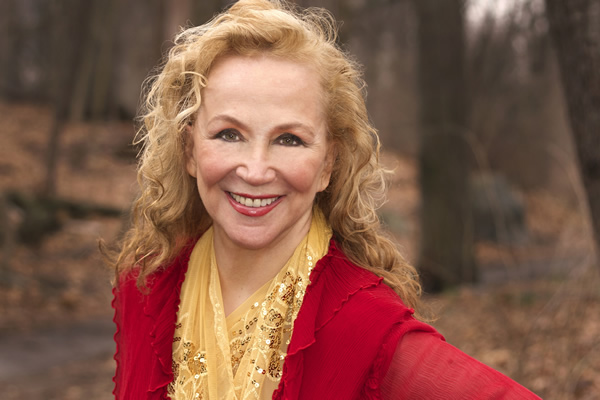
Rutanya Alda today. (Photo courtesy Alda)
a&e features
Visit Cambridge, a ‘beautiful secret’ on Maryland’s Eastern Shore
New organization promotes town’s welcoming vibe, LGBTQ inclusion
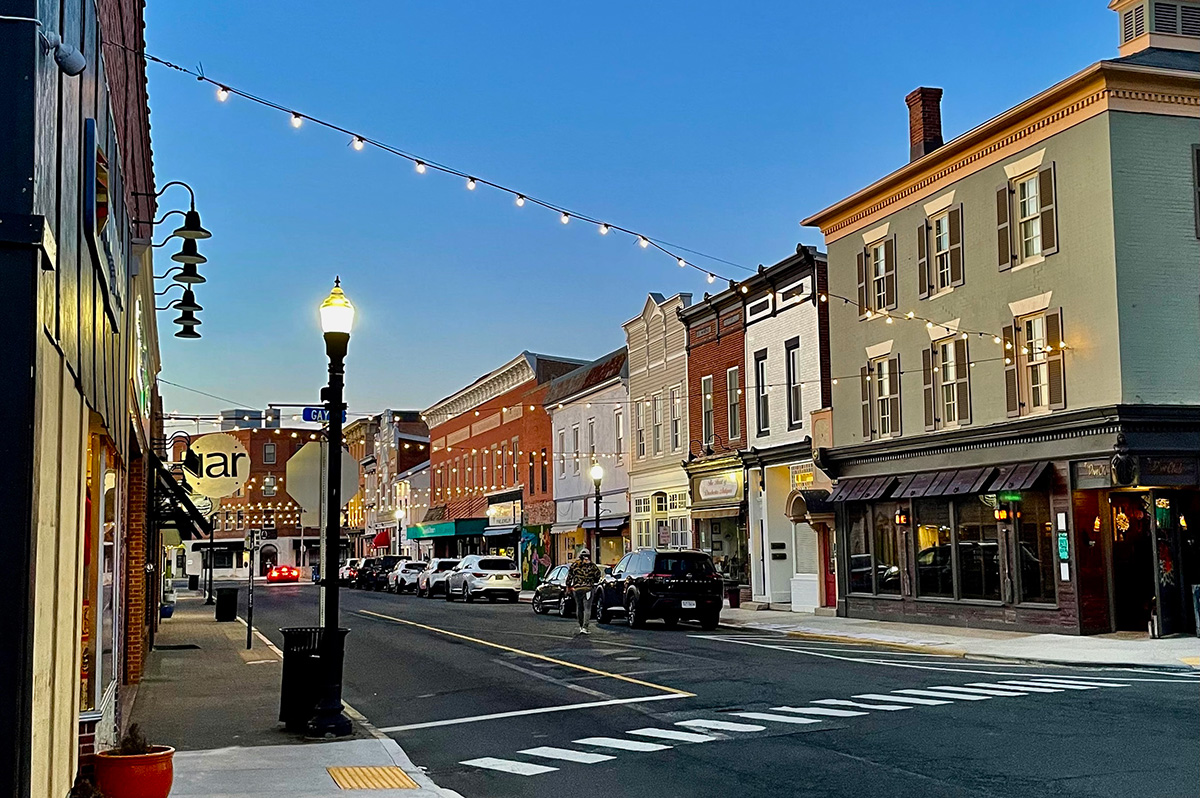
CAMBRIDGE, Md. — Driving through this scenic, historic town on Maryland’s Eastern Shore, you’ll be charmed by streets lined with unique shops, restaurants, and beautifully restored Victorian homes. You’ll also be struck by the number of LGBTQ Pride flags flying throughout the town.
The flags are a reassuring signal that everyone is welcome here, despite the town’s location in ruby red Dorchester County, which voted for Donald Trump over Kamala Harris by a lopsided margin. But don’t let that deter you from visiting. A new organization, Proudly Cambridge, is holding its debut Pride event this weekend, touting the town’s welcoming, inclusive culture.
“We stumbled on a beautiful secret and we wanted to help get the word out,” said James Lumalcuri of the effort to create Proudly Cambridge.
The organization celebrates diversity, enhances public spaces, and seeks to uplift all that Cambridge has to share, according to its mission statement, under the tagline “You Belong Here.”
The group has so far held informal movie nights and a picnic and garden party; the launch party is June 28 at the Cambridge Yacht Club, which will feature a Pride celebration and tea dance. The event’s 75 tickets sold out quickly and proceeds benefit DoCo Pride.
“Tickets went faster than we imagined and we’re bummed we can’t welcome everyone who wanted to come,” Lumalcuri said, adding that organizers plan to make “Cheers on the Choptank” an annual event with added capacity next year.
One of the group’s first projects was to distribute free Pride flags to anyone who requested one and the result is a visually striking display of a large number of flags flying all over town. Up next: Proudly Cambridge plans to roll out a program offering affirming businesses rainbow crab stickers to show their inclusiveness and LGBTQ support. The group also wants to engage with potential visitors and homebuyers.
“We want to spread the word outside of Cambridge — in D.C. and Baltimore — who don’t know about Cambridge,” Lumalcuri said. “We want them to come and know we are a safe haven. You can exist here and feel comfortable and supported by neighbors in a way that we didn’t anticipate when we moved here.”
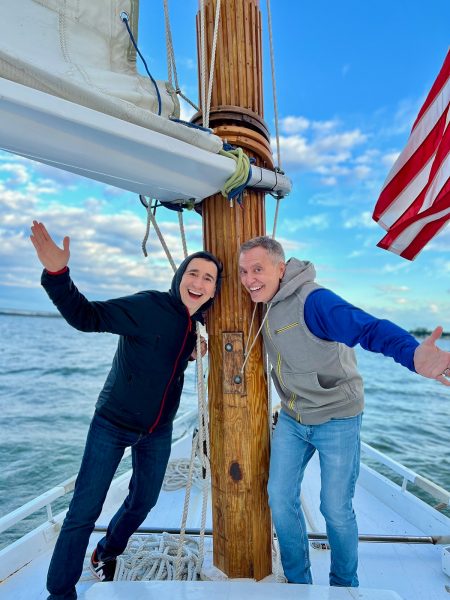
Lumalcuri, 53, a federal government employee, and his husband, Lou Cardenas, 62, a Realtor, purchased a Victorian house in Cambridge in 2021 and embarked on an extensive renovation. The couple also owns a home in Adams Morgan in D.C.
“We saw the opportunity here and wanted to share it with others,” Cardenas said. “There’s lots of housing inventory in the $300-400,000 range … we’re not here to gentrify people out of town because a lot of these homes are just empty and need to be fixed up and we’re happy to be a part of that.”
Lumalcuri was talking with friends one Sunday last year at the gazebo (affectionately known as the “gayzebo” by locals) at the Yacht Club and the idea for Proudly Cambridge was born. The founding board members are Lumalcuri, Corey van Vlymen, Brian Orjuela, Lauren Mross, and Caleb Holland. The group is currently working toward forming a 501(c)3.
“We need visibility and support for those who need it,” Mross said. “We started making lists of what we wanted to do and the five of us ran with it. We started meeting weekly and solidified what we wanted to do.”
Mross, 50, a brand strategist and web designer, moved to Cambridge from Atlanta with her wife three years ago. They knew they wanted to be near the water and farther north and began researching their options when they discovered Cambridge.
“I had not heard of Cambridge but the location seemed perfect,” she said. “I pointed on a map and said this is where we’re going to move.”
The couple packed up, bought a camper trailer and parked it in different campsites but kept coming back to Cambridge.
“I didn’t know how right it was until we moved here,” she said. “It’s the most welcoming place … there’s an energy vortex here – how did so many cool, progressive people end up in one place?”
Corey van Vlymen and his husband live in D.C. and were looking for a second home. They considered Lost River, W.Va., but decided they preferred to be on the water.
“We looked at a map on both sides of the bay and came to Cambridge on a Saturday and bought a house that day,” said van Vlymen, 39, a senior scientist at Booz Allen Hamilton. They’ve owned in Cambridge for two years.
They were drawn to Cambridge due to its location on the water, the affordable housing inventory, and its proximity to D.C.; it’s about an hour and 20 minutes away.
Now, through the work of Proudly Cambridge, they hope to highlight the town’s many attributes to residents and visitors alike.
“Something we all agree on is there’s a perception problem for Cambridge and a lack of awareness,” van Vlymen said. “If you tell someone you’re going to Cambridge, chances are they think, ‘England or Massachusetts?’”
He cited the affordability and the opportunity to save older, historic homes as a big draw for buyers.
“It’s all about celebrating all the things that make Cambridge great,” Mross added. “Our monthly social events are joyful and celebratory.” A recent game night drew about 70 people.
She noted that the goal is not to gentrify the town and push longtime residents out, but to uplift all the people who are already there while welcoming new visitors and future residents.
They also noted that Proudly Cambridge does not seek to supplant existing Pride-focused organizations. Dorchester County Pride organizes countywide Pride events and Delmarva Pride was held in nearby Easton two weeks ago.
“We celebrate all diversity but are gay powered and gay led,” Mross noted.
To learn more about Proudly Cambridge, visit the group on Facebook and Instagram.
What to see and do
Cambridge, located 13 miles up the Choptank River from the Chesapeake Bay, has a population of roughly 15,000. It was settled in 1684 and named for the English university town in 1686. It is home to the Harriet Tubman Museum, mural, and monument. Its proximity to the Blackwater National Wildlife Refuge makes it a popular stop for birders, drawn to more than 27,000 acres of marshland dubbed “the Everglades of the north.”
The refuge is walkable, bikeable, and driveable, making it an accessible attraction for all. There are kayaking and biking tours through Blackwater Adventures (blackwateradventuresmd.com).
Back in town, take a stroll along the water and through historic downtown and admire the architecture. Take in the striking Harriet Tubman mural (424 Race St.). Shop in the many local boutiques, and don’t miss the gay-owned Shorelife Home and Gifts (421 Race St.), filled with stylish coastal décor items.
Stop for breakfast or lunch at Black Water Bakery (429 Race St.), which offers a full compliment of coffee drinks along with a build-your-own mimosa bar and a full menu of creative cocktails.
The Cambridge Yacht Club (1 Mill St.) is always bustling but you need to be a member to get in. Snapper’s on the water is temporarily closed for renovations. RaR Brewing (rarbrewing.com) is popular for craft beers served in an 80-year-old former pool hall and bowling alley. The menu offers burgers, wings, and other bar fare.
For dinner or wine, don’t miss the fantastic Vintage 414 (414 Race St.), which offers lunch, dinner, wine tasting events, specialty foods, and a large selection of wines. The homemade cheddar crackers, inventive flatbreads, and creative desserts (citrus olive oil cake, carrot cake trifle) were a hit on a recent visit.
Also nearby is Ava’s (305 High St.), a regional chain offering outstanding Italian dishes, pizzas, and more.
For something off the beaten path, visit Emily’s Produce (22143 Church Creek Rd.) for its nursery, produce, and prepared meals.
“Ten minutes into the sticks there’s a place called Emily’s Produce, where you can pay $5 and walk through a field and pick sunflowers, blueberries, you can feed the goats … and they have great food,” van Vlymen said.
As for accommodations, there’s the Hyatt Regency Chesapeake Bay (100 Heron Blvd. at Route 50), a resort complex with golf course, spa, and marina. Otherwise, check out Airbnb and VRBO for short-term rentals closer to downtown.
Its proximity to D.C. and Baltimore makes Cambridge an ideal weekend getaway. The large LGBTQ population is welcoming and they are happy to talk up their town and show you around.
“There’s a closeness among the neighbors that I wasn’t feeling in D.C.,” Lumalcuri said. “We look after each other.”
a&e features
James Baldwin bio shows how much of his life is revealed in his work
‘A Love Story’ is first major book on acclaimed author’s life in 30 years

‘Baldwin: A Love Story’
By Nicholas Boggs
c.2025, FSG
$35/704 pages
“Baldwin: A Love Story” is a sympathetic biography, the first major one in 30 years, of acclaimed Black gay writer James Baldwin. Drawing on Baldwin’s fiction, essays, and letters, Nicolas Boggs, a white writer who rediscovered and co-edited a new edition of a long-lost Baldwin book, explores Baldwin’s life and work through focusing on his lovers, mentors, and inspirations.
The book begins with a quick look at Baldwin’s childhood in Harlem, and his difficult relationship with his religious, angry stepfather. Baldwin’s experience with Orilla Miller, a white teacher who encouraged the boy’s writing and took him to plays and movies, even against his father’s wishes, helped shape his life and tempered his feelings toward white people. When Baldwin later joined a church and became a child preacher, though, he felt conflicted between academic success and religious demands, even denouncing Miller at one point. In a fascinating late essay, Baldwin also described his teenage sexual relationship with a mobster, who showed him off in public.
Baldwin’s romantic life was complicated, as he preferred men who were not outwardly gay. Indeed, many would marry women and have children while also involved with Baldwin. Still, they would often remain friends and enabled Baldwin’s work. Lucien Happersberger, who met Baldwin while both were living in Paris, sent him to a Swiss village, where he wrote his first novel, “Go Tell It on the Mountain,” as well as an essay, “Stranger in the Village,” about the oddness of being the first Black person many villagers had ever seen. Baldwin met Turkish actor Engin Cezzar in New York at the Actors’ Studio; Baldwin later spent time in Istanbul with Cezzar and his wife, finishing “Another Country” and directing a controversial play about Turkish prisoners that depicted sexuality and gender.
Baldwin collaborated with French artist Yoran Cazac on a children’s book, which later vanished. Boggs writes of his excitement about coming across this book while a student at Yale and how he later interviewed Cazac and his wife while also republishing the book. Baldwin also had many tumultuous sexual relationships with young men whom he tried to mentor and shape, most of which led to drama and despair.
The book carefully examines Baldwin’s development as a writer. “Go Tell It on the Mountain” draws heavily on his early life, giving subtle signs of the main character John’s sexuality, while “Giovanni’s Room” bravely and openly shows a homosexual relationship, highly controversial at the time. “If Beale Street Could Talk” features a woman as its main character and narrator, the first time Baldwin wrote fully through a woman’s perspective. His essays feel deeply personal, even if they do not reveal everything; Lucian is the unnamed visiting friend in one who the police briefly detained along with Baldwin. He found New York too distracting to write, spending his time there with friends and family or on business. He was close friends with modernist painter Beauford Delaney, also gay, who helped Baldwin see that a Black man could thrive as an artist. Delaney would later move to France, staying near Baldwin’s home.
An epilogue has Boggs writing about encountering Baldwin’s work as one of the few white students in a majority-Black school. It helpfully reminds us that Baldwin connects to all who feel different, no matter their race, sexuality, gender, or class. A well-written, easy-flowing biography, with many excerpts from Baldwin’s writing, it shows how much of his life is revealed in his work. Let’s hope it encourages reading the work, either again or for the first time.
a&e features
Looking back at 50 years of Pride in D.C
Washington Blade’s unique archives chronicle highs, lows of our movement
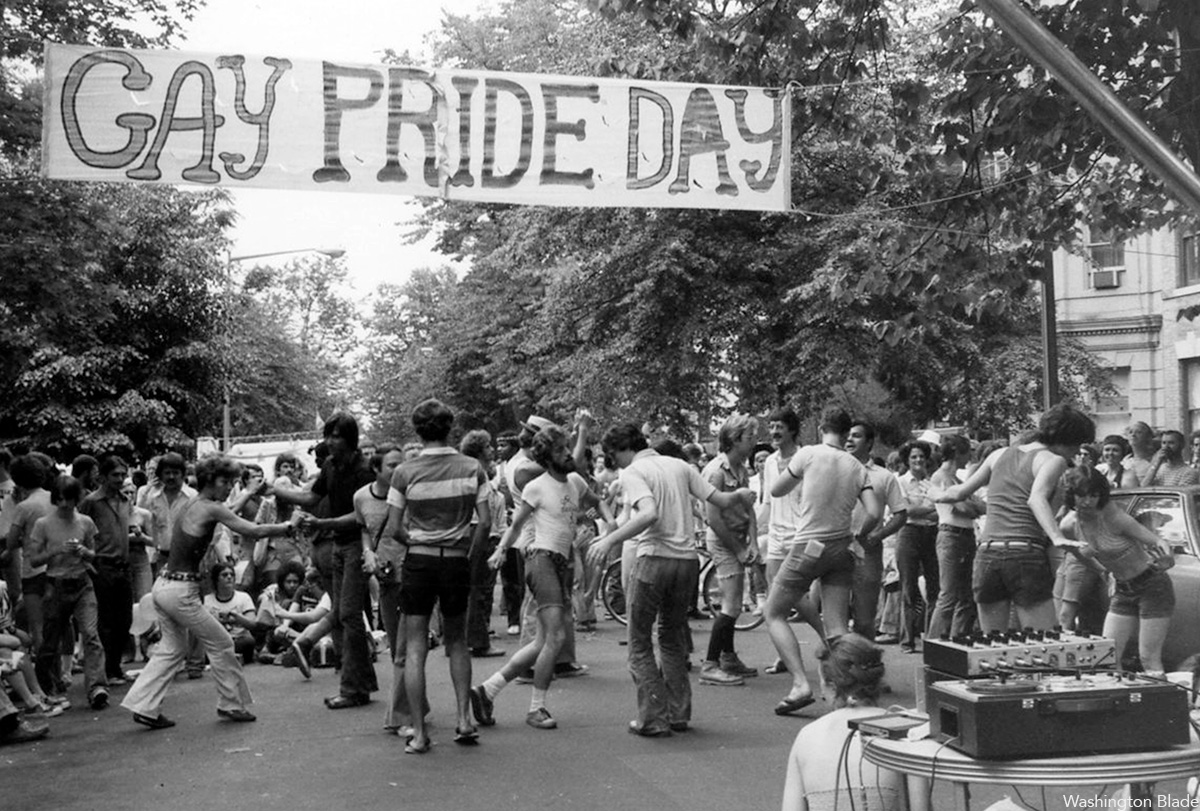
To celebrate the 50th anniversary of LGBTQ Pride in Washington, D.C., the Washington Blade team combed our archives and put together a glossy magazine showcasing five decades of celebrations in the city. Below is a sampling of images from the magazine but be sure to find a print copy starting this week.
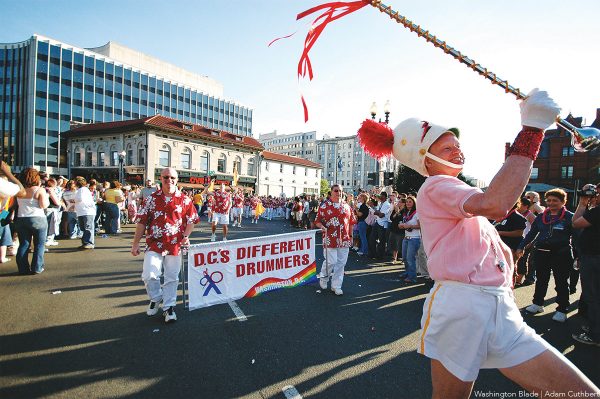
The magazine is being distributed now and is complimentary. You can find copies at LGBTQ bars and restaurants across the city. Or visit the Blade booth at the Pride festival on June 7 and 8 where we will distribute copies.
Thank you to our advertisers and sponsors, whose support has enabled us to distribute the magazine free of charge. And thanks to our dedicated team at the Blade, especially Photo Editor Michael Key, who spent many hours searching the archives for the best images, many of which are unique to the Blade and cannot be found elsewhere. And thanks to our dynamic production team of Meaghan Juba, who designed the magazine, and Phil Rockstroh who managed the process. Stephen Rutgers and Brian Pitts handled sales and marketing and staff writers Lou Chibbaro Jr., Christopher Kane, Michael K. Lavers, Joe Reberkenny along with freelancer and former Blade staffer Joey DiGuglielmo wrote the essays.
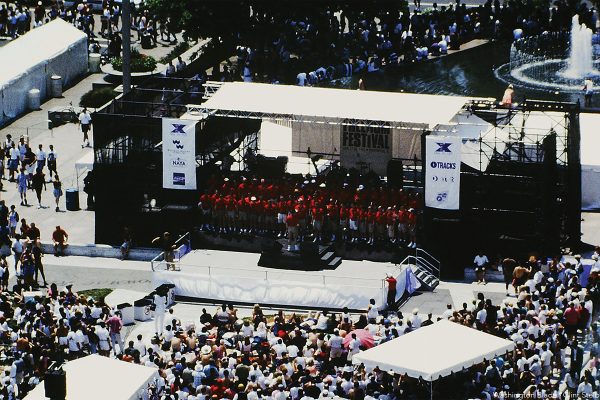
The magazine represents more than 50 years of hard work by countless reporters, editors, advertising sales reps, photographers, and other media professionals who have brought you the Washington Blade since 1969.
We hope you enjoy the magazine and keep it as a reminder of all the many ups and downs our local LGBTQ community has experienced over the past 50 years.
I hope you will consider supporting our vital mission by becoming a Blade member today. At a time when reliable, accurate LGBTQ news is more essential than ever, your contribution helps make it possible. With a monthly gift starting at just $7, you’ll ensure that the Blade remains a trusted, free resource for the community — now and for years to come. Click here to help fund LGBTQ journalism.
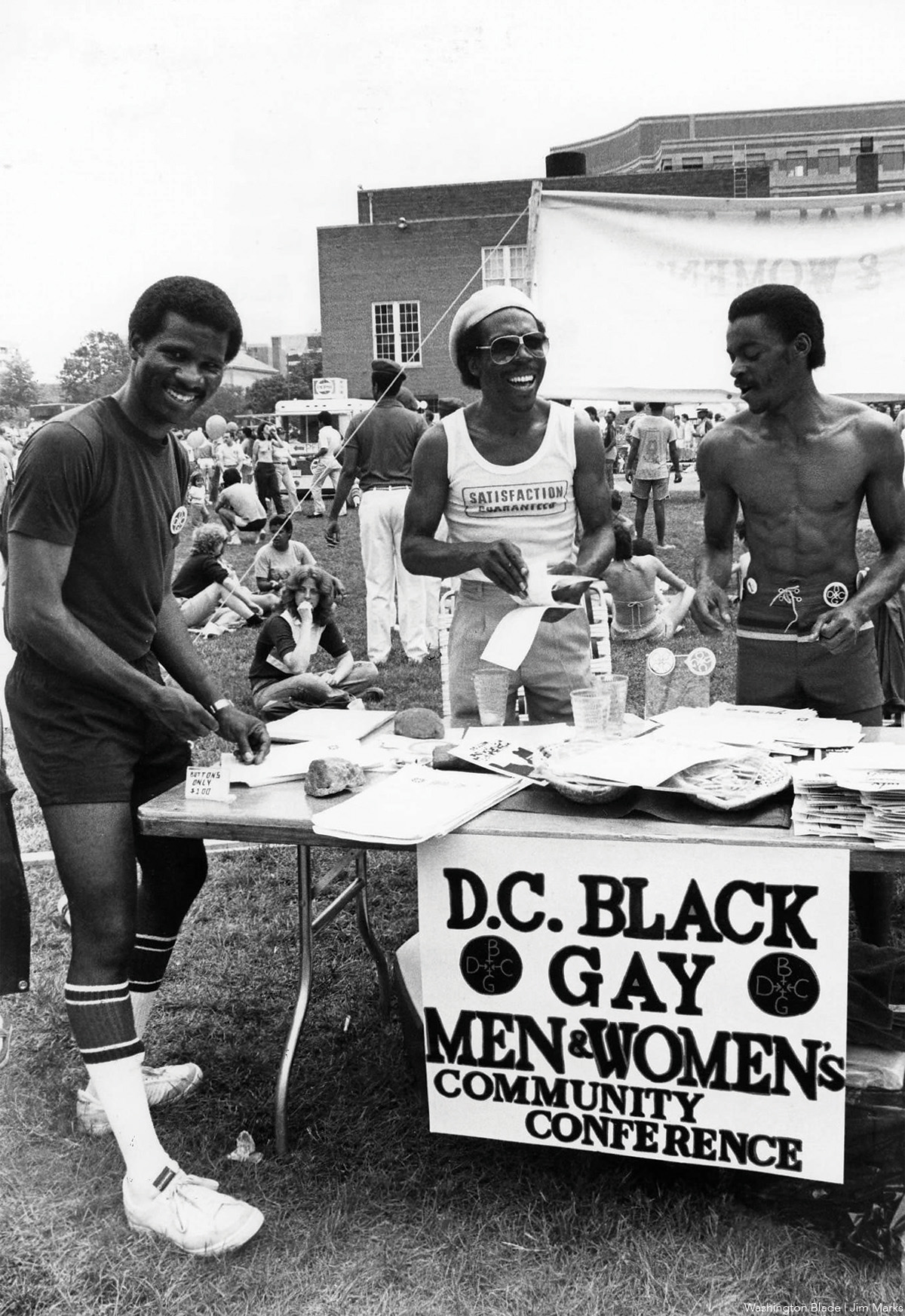
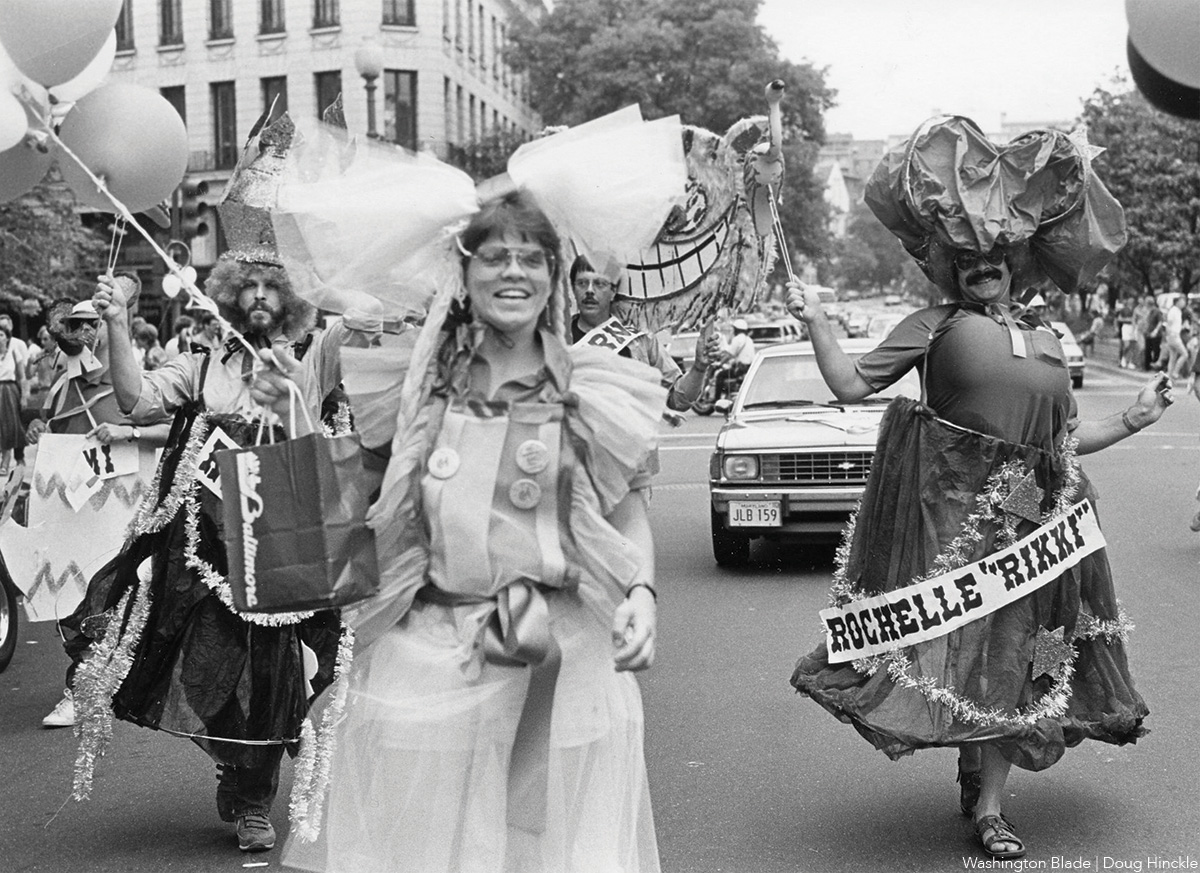
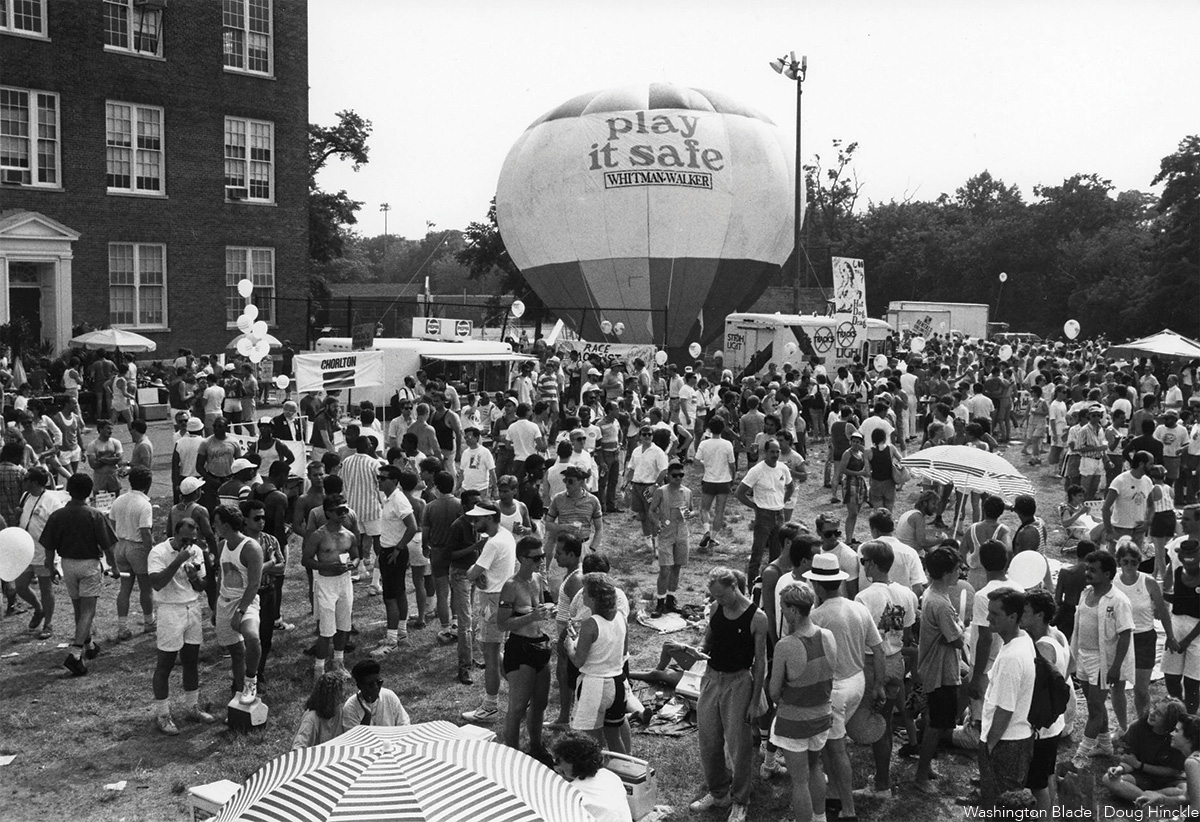
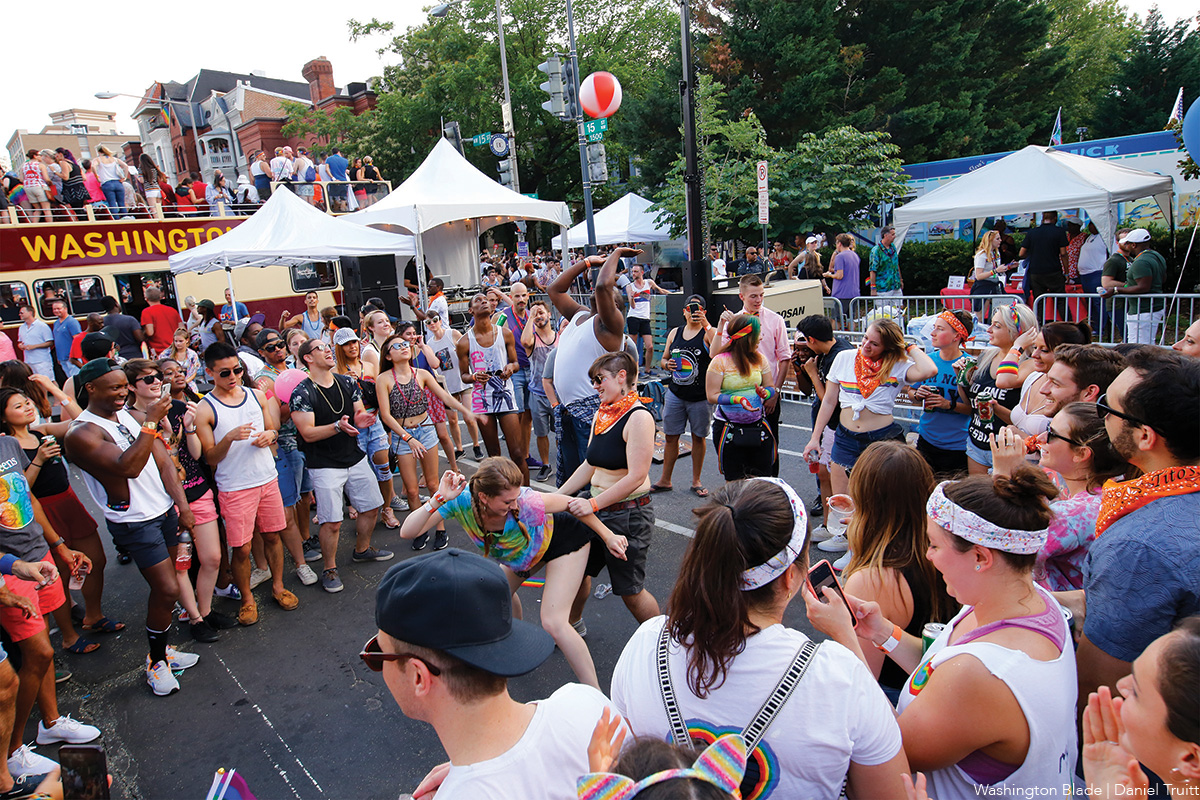
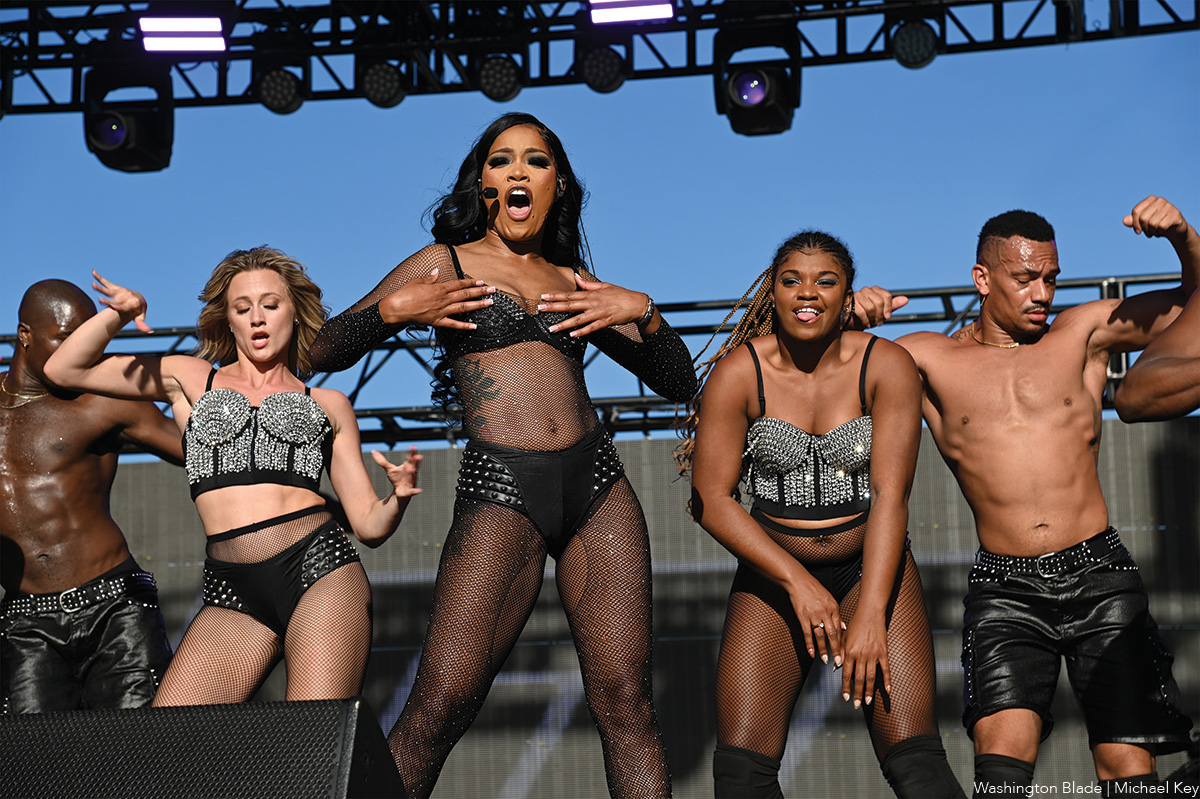
-

 U.S. Supreme Court3 days ago
U.S. Supreme Court3 days agoSupreme Court upholds ACA rule that makes PrEP, other preventative care free
-

 U.S. Supreme Court4 days ago
U.S. Supreme Court4 days agoSupreme Court rules parents must have option to opt children out of LGBTQ-specific lessons
-
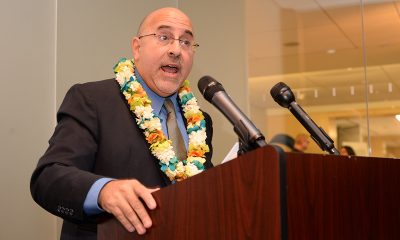
 National5 days ago
National5 days agoEvan Wolfson on the 10-year legacy of marriage equality
-

 Congress4 days ago
Congress4 days agoSenate parliamentarian orders removal of gender-affirming care ban from GOP reconciliation bill

